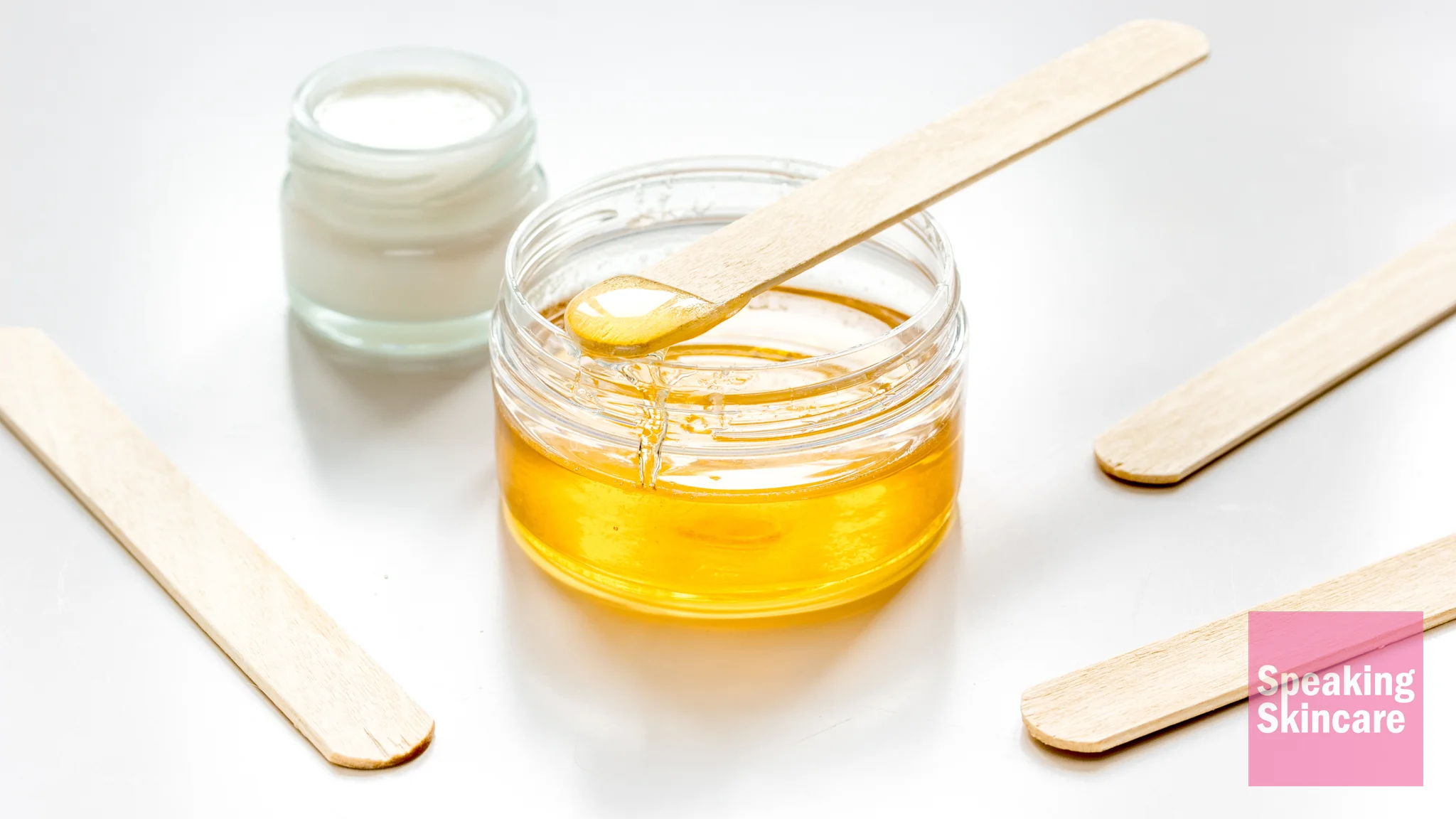Waxing can be quite an impactful form of hair removal treatment. It involves hot wax being applied to the skin, being allowed to cool and harden, before getting stripped off in a rapid motion, hopefully taking all the unwanted hair with it.
But while millions of women across the world undertake regular waxing sessions, either at home or through a beauty professional, one aspect of the process remains ever frustrating – wax residue getting stuck on the skin.
What’s the best and safest way to remove this excess wax? We looked into it.
How to remove wax from your skin
Okay, let’s get down to it. If you’ve just suffered through a waxing session and have some extra residue stuck to various parts of your skin, it’s important to learn the right techniques to remove it effectively.
Soap and water
The instinctive thing to do whenever we need to wash away a substance on our skin is to run to the sink and use good old-fashioned soap and water.
While this sounds simple, this method is purely reliant on how quickly you act. If the wax is still somewhat warm and fluid, this technique might yield some positive results. However, if the wax has cooled and solidified, soap and water alone may not be enough to fully get the job done.
Hot water compress
Soak a washcloth in hot water for about a minute. Then, gently apply it to the area of the skin where the wax is attached. Leave it there for 60 seconds, which is enough time for the skin to absorb the moisture.
Hopefully, the power of the hot water will have softened the wax, allowing you to simply wipe it away with the washcloth.
Ice
If you have some bulky ice cubes sitting in the freezer, you should spare a few from your cocktails and they might be useful in removing wax from your skin.
Simply place the ice on the wax for 30-60 seconds, then gently wipe with a cloth to see if it comes off. If the wax isn’t budging easily and still sticking to the skin, it might be worth trying another method to avoid potential scratches and damage to your skin. Don’t force it if it’s difficult.
Rubbing alcohol
Rubbing alcohol seems to be the go-to product for all things cleaning-related, and for good reason too.
Dip a cotton ball or cloth into the rubbing alcohol, then rub it into the wax using a gentle, circular motion. Keep this up until the wax begins to loosen and dissolve. You may have to peel the wax to get it all off.
To finish, be sure to use a soft moisturizer on the skin afterward, as rubbing alcohol can severely dry the skin and cause irritation.
Oil
Heated oil is probably the best way to make this method work effectively. Warm up an oil of your choice, such as olive oil, massage oil, mineral oil, or coconut oil, before pouring it on a cotton pad or cloth. Then, hold the pad on the wax and gently rub in a circular motion.
Keep this up for about 2 minutes, adding more oil if necessary, until the wax softens and removes itself. Gently rinse the oil off the skin to finish.
Petroleum jelly
Petroleum jelly is made from a mixture of waxes and mineral oils. These ingredients result in a jelly-like texture and allow petroleum jelly to work as an effective moisturizer and healer of minor skin damage.
It can also help to remove excess wax from the skin. Scoop a liberal amount of petroleum jelly onto the skin where the wax resides. Leave it to sit for upwards of 5 minutes, allowing the skin to absorb all the ingredients. Finally, once enough time has subsided, wipe away the jelly with a cloth, and both the jelly and wax should be removed with ease.
How to prevent wax from sticking to your skin in the future
The best defense is a good offense. With that in mind, it would be smart of us to learn how to prevent wax from sticking to the skin in the first place so we don’t have to deal with the hassle of getting it off again. Well, here are the best ways you can do exactly that.
The best way to protect your skin from accumulating wax residue is to take preventative measures. They are:
Moisturize the skin
In the 24 hours before you are due to wax, make sure to constantly and properly moisturize the skin. This will keep the skin suitably hydrated and able to handle the wax better and reduce the chances of it latching on to dry patches.
Use hot and thin wax
The hotter and thinner the wax, the less likely it will attach itself in places it doesn’t belong. This is because colder wax tends to thicken, leading to it getting stuck in unintended areas. Ensure the wax is hot (but not too hot that it burns) and runny before applying it to your skin.
Apply powder
Did you know sweating increases the chances of wax sticking to the skin? To combat this, applying powder to the skin will help to soak up any excess and unwanted sweat patches, allowing for a smoother and safer wax. Be sure to spread the powder evenly and well.
Conclusion
Waxing can be painful enough without having to deal with excess residue in places it doesn’t belong. Thankfully, using the 6 home remedies above, getting wax off the skin can be a straightforward and simple process.
Always prepare the skin correctly before any waxing session to reduce any unnecessary stickiness in the future.
